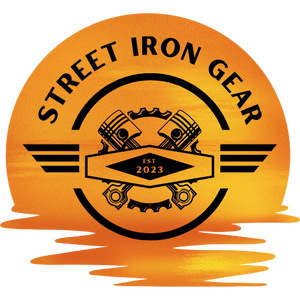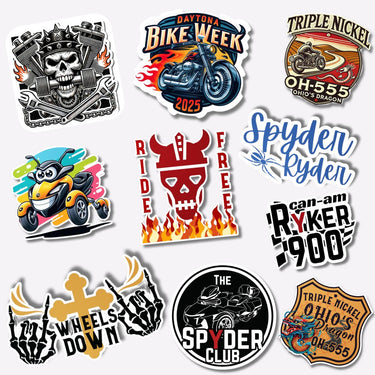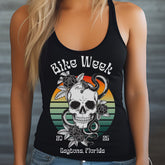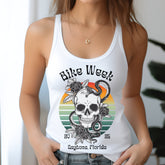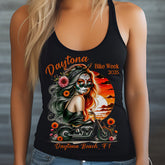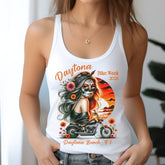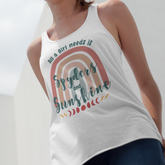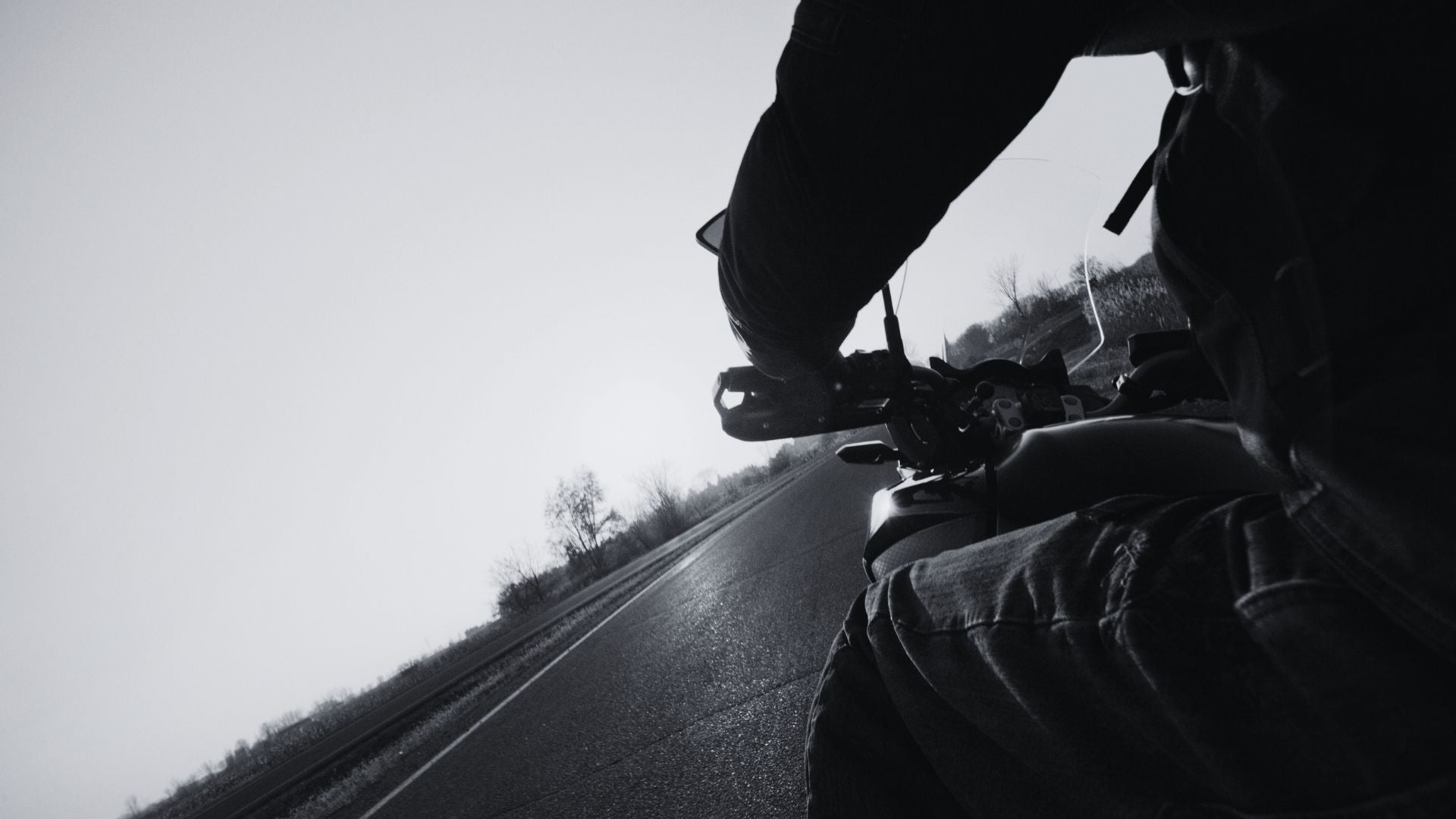Choosing the right motorcycle tires is like picking out shoes—you want the perfect combination of fit, performance, and durability for the type of terrain you'll be facing. Just like you wouldn’t wear flip-flops to hike a mountain, you shouldn’t ride on tires that aren’t made for your bike’s style or riding conditions. Whether you’re hitting the highways on a cruiser, exploring backroads on an adventure bike, or cruising comfortably on a Can-Am Spyder, your tires are one of the most critical components for safety and performance.
I’ve ridden on various bikes over the years—from cruisers to adventure bikes to my current Can-Am Spyder RT—and I’ve learned (sometimes the hard way) just how crucial tire selection and maintenance are. If your tires aren’t up to the task, you’re going to feel it in every turn, brake, and acceleration. Here's what you need to know when choosing the right tires and when it’s time to say goodbye to the ones you have.
Know Your Tire Types and Their Purpose
Motorcycle tires come in a variety of styles, each designed with a specific type of riding in mind. Just like different motorcycles serve different purposes, so do their tires.
Street Tires: These are designed for paved roads, offering maximum grip on asphalt and wet surfaces. They have a smooth profile and minimal tread for optimal contact with the road. Street tires are ideal for cruisers, sport bikes, and touring bikes.
Adventure Tires (50/50 or 80/20): If you’re like I was with my adventure bike days, you might love a bit of off-road exploring. Adventure tires offer a mix of on-road and off-road performance, depending on the ratio. A 50/50 tire is equally balanced between both terrains, while an 80/20 is better suited for mostly paved surfaces with occasional dirt-road detours.
Touring Tires: Touring tires prioritize longevity and comfort for long-distance riders. They typically feature a harder compound and deep grooves to handle different weather conditions. These are the tires that’ll keep you rolling smoothly across states during a cross-country ride.
Performance Tires: Built for speed and agility, these tires are optimized for grip and handling, making them ideal for sport bikes and track riders. However, their lifespan is shorter due to the softer rubber compound.
For three-wheeled riders, like those of us on Can-Am Spyders, it’s important to choose tires that balance stability and grip since we lean on handling and braking differently from two-wheelers. Brands like Kenda offer quality options specifically for the Spyder.
Signs It’s Time to Replace Your Tires
Tires don’t last forever, no matter how much you want to squeeze extra miles out of them. Worn-out tires affect your ability to brake, corner, and accelerate safely. Here are some key signs that it’s time for a change.
Tread Wear: If your tire’s tread is starting to resemble a smooth pancake, it’s time to replace it. The wear indicators—those little rubber bars within the tread—should never be flush with the surface.
Age: Tires degrade over time, even if they look fine. If your tires are more than five to six years old, they may have become brittle or cracked. The manufacturing date is stamped on the sidewall in a four-digit code (e.g., 4219 means the tire was made in the 42nd week of 2019).
Uneven Wear: If your tires are wearing unevenly, you might have alignment or suspension issues. Uneven wear can compromise handling and stability, especially when braking hard or cornering.
Cracks or Dry Rot: Exposure to sun, heat, and time can cause rubber to crack or dry out. If you see visible cracks, it’s a sign the tire's integrity has been compromised.
Loss of Traction: If you notice your bike slipping or sliding more than usual—especially in wet conditions—it’s likely that your tire’s grip is no longer effective.
Factors to Consider When Choosing New Tires
When replacing tires, it’s important to select ones that match your bike’s specifications and riding style. Here are some key factors to keep in mind.
Tire Size and Load Rating: Always adhere to the manufacturer’s recommended tire size and load rating. Going too wide or narrow can affect handling, while underestimating the load rating could lead to tire failure under stress.
Tire Compound: Softer compounds provide more grip but wear out faster, while harder compounds last longer but might offer less traction. For touring and cruiser riders, a harder compound often makes sense for longevity. For sport riders, a softer compound might be worth the trade-off for better cornering.
Riding Conditions: Think about where you ride most. Are you tearing up twisty roads, navigating gravel paths, or commuting through the city? Different tread patterns and compounds are optimized for different environments.
Weather: If you regularly ride in rain or varying temperatures, look for tires with all-season or wet-weather capabilities. Tires with deep grooves and siping (small cuts in the tread) are better for channeling water and maintaining traction in wet conditions.
Tire Maintenance Tips to Extend Life
Tires are a hefty investment, so it’s worth taking a little extra care to make them last longer.
Check Tire Pressure Regularly: Riding with under-inflated or over-inflated tires can cause premature wear and affect handling. Use a quality tire pressure gauge to check your tires before every ride. Refer to your owner’s manual for the correct pressure settings.
Inspect Tires Before Each Ride: A quick walk-around to inspect for nails, cuts, or cracks can save you from a roadside disaster. I learned this lesson after a nail flattened one of my tires miles away from the nearest gas station.
Balance and Align: Unbalanced tires can cause vibrations and uneven wear. Ensure your tires are properly balanced and aligned, especially after replacement or installation.
Rotate Tires (for Can-Am Riders): On a Can-Am Spyder, your tires wear differently than on a two-wheeler. Rotating your tires periodically can help ensure even wear and prolong their lifespan.
Brands and Recommendations
There are plenty of reputable tire manufacturers to choose from. Michelin and Bridgestone are known for their high-performance sport and touring tires. Pirelli caters to performance enthusiasts, while Dunlop offers dependable cruiser and adventure options. Kenda is a go-to brand for Can-Am Spyder riders, offering durable and reliable options designed for the unique handling of three-wheeled motorcycles.
If you're planning a big trip—perhaps across the Great Smoky Mountains National Park or along California's Pacific Coast Highway—make sure your tires are up to the task. Trust me, you don’t want to discover your tires are shot halfway through a scenic ride!
Final Thoughts
Your motorcycle tires are your lifeline to the road, so choosing the right ones and knowing when to replace them is crucial. By understanding your bike’s needs, monitoring tire condition, and performing regular maintenance, you can enjoy a safer, smoother ride. Remember, investing in quality tires is an investment in your safety—and your next great adventure.
Shameless Plug
Transform your space with our 'Abstract Motorcycle in European City' framed canvas wall art, a stunning piece that merges the thrill of biking with the Pacific Coast Highway. This huge biker canvas wall decor, featuring an abstract motorcycle design, is the perfect gift for motorcycle lovers and a striking addition to any collection of motorcycle art prints. Let your personality be reflected on the artwork adorning your walls.
